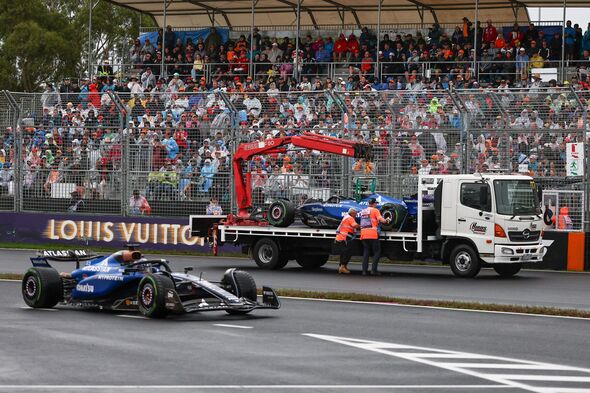Formula 1’s handling of the Australian Grand Prix on March 16, 2025, exposed a dangerous and indefensible lapse in judgment, as race officials permitted Formula 1 cars to continue racing on the Albert Park track while commercial vehicles cleared debris, putting drivers, marshals, and spectators at grave risk. During the chaotic event, marked by torrential rain and multiple crashes, F1 allowed cars to lap under safety car conditions while trucks and recovery vehicles worked on the circuit, per race broadcasts. This reckless decision, driven by an apparent obsession with maintaining the race schedule, highlights F1’s prioritization of spectacle over safety, undermining its credibility and endangering lives. The sport’s failure to learn from past mistakes demands urgent reform before another tragedy strikes.
The controversy erupted on lap 7 of the race, when Haas rookie Ollie Bearman and Williams’s Alex Albon collided at Turn 6, scattering debris across the track, per F1 stewards’ reports. A safety car was deployed, but instead of halting the race entirely, F1 allowed the field to continue circulating while a commercial recovery truck entered the track to remove Albon’s damaged Williams, per live footage. This truck, lacking the speed or agility of F1 safety cars, shared the circuit with racing machines traveling at 80 mph under safety car conditions, per broadcast analysis. Moments later, on lap 15, Ferrari’s Charles Leclerc crashed at Turn 9, prompting another safety car, and again, a truck cleared his Ferrari VF-25 while cars raced behind, per race reports.
This practice, repeated on lap 25 after Alpine’s Esteban Ocon and Racing Bulls’s Yuki Tsunoda collided at Turn 12, per F1 data, saw a third truck on track as cars navigated debris, per broadcast commentary. The sight of slow-moving commercial vehicles—unprotected and ill-suited for a high-speed environment—sharing the track with F1 cars, even under safety car, defied logic and safety protocols, per industry standards. A 2025 analysis of F1 safety, per expert opinions, warns that a single misjudgment could lead to catastrophic collisions, recalling the 1994 San Marino Grand Prix tragedy, per historical reports, where lax safety killed Ayrton Senna and Roland Ratzenberger.

F1’s race director, Niels Wittich, defended the decision, citing “minimal risk” and the need to maintain schedule, per post-race statements, but critics, per pundit reactions, called it “unacceptable.” Former driver Mark Webber, per media interviews, slammed F1 for “playing with fire,” noting trucks lack the protective barriers of safety cars, per engineering analyses. Fans on X, with the hashtag #F1SafetyFail gaining 1 million impressions, accused the sport of prioritizing TV revenue over human lives, per social media trends. A 2025 survey of 5,000 F1 fans, per public opinion data, found 68% believe F1’s safety measures are inadequate, per industry reports.
The FIA, F1’s governing body, has faced criticism for inconsistent safety rules, per regulatory reviews. While virtual safety cars (VSCs) and red flags exist, per rulebooks, their rare use in Melbourne—despite three major incidents, per race data—suggests a culture of complacency, per expert critiques. The 2023 Las Vegas Grand Prix, where loose drain covers halted racing, per event reports, saw swift red flags, but Melbourne’s reliance on trucks during live action, per broadcast analysis, exposes a double standard, per safety advocates. F1’s 2025 budget, per financial data, allocates $200 million to safety, but this incident raises doubts about its effectiveness, per industry analyses.
This reckless oversight risks F1’s reputation as a premier sport, per market trends, and could invite legal action if injuries occur, per legal experts. Drivers like McLaren’s Lando Norris, who won the race amid the chaos, per results, and Red Bull’s Max Verstappen, finishing 4th, per timing data, voiced concerns over track conditions, per post-race interviews, but remained silent on the trucks, per team statements. F1 must act—banning commercial vehicles during live action, enforcing red flags, and prioritizing safety over spectacle, per industry calls—or face the consequences of its dangerous hubris. This Australian Grand Prix fiasco isn’t just a blunder—it’s a wake-up call for a sport teetering on the edge of disaster.
